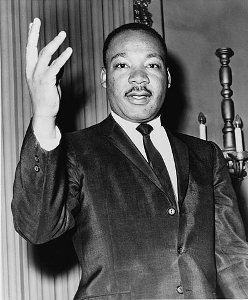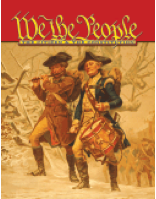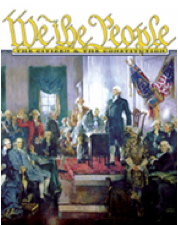Enhance your classroom experience on Dr. Martin Luther King Jr Day with these teacher-tested lessons from the nationally recognized We the People: The Citizen & the Constitution curriculum. These materials will help inform your students about the national struggle for civil rights and equal protection under the law.
Dr. Martin Luther King Jr. and the Power of Words (Grades 7-12)
Summary: In this lesson students have the opportunity to discuss how words have the power to bring about political, social, or economic change in society. By reviewing quotations from various leaders, activists, and others, students can begin to understand how ideas have an impact on the hearts and minds of people and can be a catalyst for change. Finally, students will reflect on the words of Martin Luther King Jr. and determine their relevance to the political, social, and economic issues of today.
![]() Lesson, Teacher Resource 1, and
Lesson, Teacher Resource 1, and ![]() Teacher Resource 2
Teacher Resource 2
How Does the Constitution Safeguard the Right to Equal Protection of the Law? We the People: The Citizen & the Constitution, Level 2, Lesson 26.
Summary: In this lesson, students are introduced to one of the most important parts of the Fourteenth Amendment to the Constitution—the equal protection clause. When your students finish this lesson, they will be able to explain the purpose of the equal protection clause. They will also be able to describe some of the steps that Congress, the executive branch, the U.S. Supreme Court, and citizens have taken to end unfair discrimination in our nation.
How Have Civil Rights Movements Resulted in Fundamental Political and Social Change in the United States? We the People: The Citizen & the Constitution, Level 3, Lesson 35, pp. 261-268.
Summary: The Declaration of Independence is celebrated for its commitment to the principles of human liberty and equality. The Fourteenth Amendment guarantees equal treatment under the law. This lesson focuses on political and social movements that have used and continue to use the Declaration and the Fourteenth Amendment to effect fundamental political and social change in the United States. When students have finished this lesson, they will be able to explain why African Americans, women, and other
groups found it necessary to take concerted action to ensure recognition of their civil rights. They will also be able to describe some of the goals and tactics that civil rights movements have used. They will be able to describe and explain the importance of the Civil Rights Act of 1964 and the Voting Rights Act of 1965. They also will be able to identify some ongoing issues involving civil rights. Finally, they will be able to evaluate, take, and defend positions on landmark legislation involving civil rights and the role of civil disobedience in America’s constitutional democracy.

Talking Civics
Talking Civics is a personal look at civics in action. Podcasts feature conversations with individuals about their experiences as first-hand participants in civic history and civic affairs.
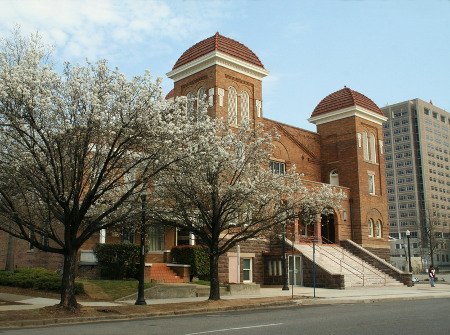
Episode 1
Doug Jones Doug Jones played a pivotal role as United States attorney in the prosecution of two former Ku Klux Klansmen for the murder of four young girls in the 1963 bombing of the 16th Street Baptist Church in Birmingham, Alabama. The bombing was a deadly act of violence that revealed the brutal side of racism to the world and helped generate widespread support for the civil rights movement.
Doug Jones recalls growing up in a segregated suburban area just west of Birmingham and talks about how he became involved in reopening the case of the 16th Street Baptist Church bombing.
Doug Jones recounts his prosecution of Thomas Blanton, Jr., and Bobby Frank Cherry for bombing the 16th Street Baptist Street Church and considers the significance of this event in the context of the civil rights movement.
Episode 2
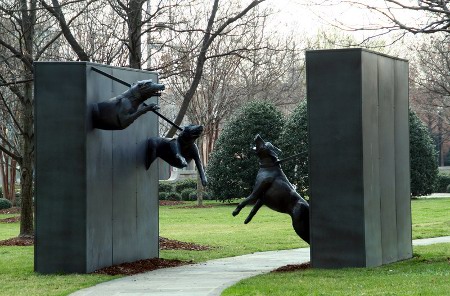
Janice Kelsey As a teenager, Janice Kelsey participated in the Children’s March in Birmingham, Alabama. The Children’s March was organized by Reverend James Bevel as a nonviolent civil rights protest. Kelsey went on to become a lifelong educator in Birmingham who continued to share her experiences with her students and others about her role as a foot soldier in the fight again racial discrimination.

